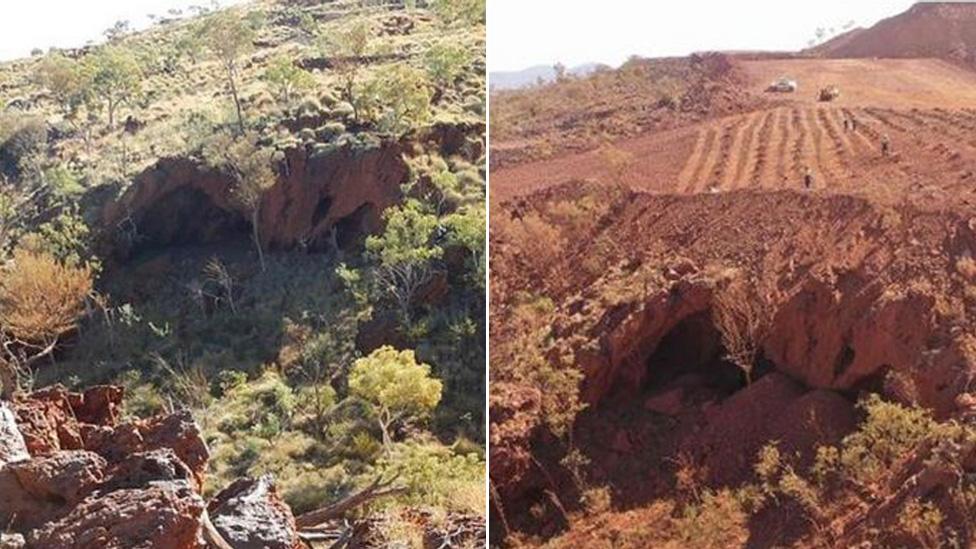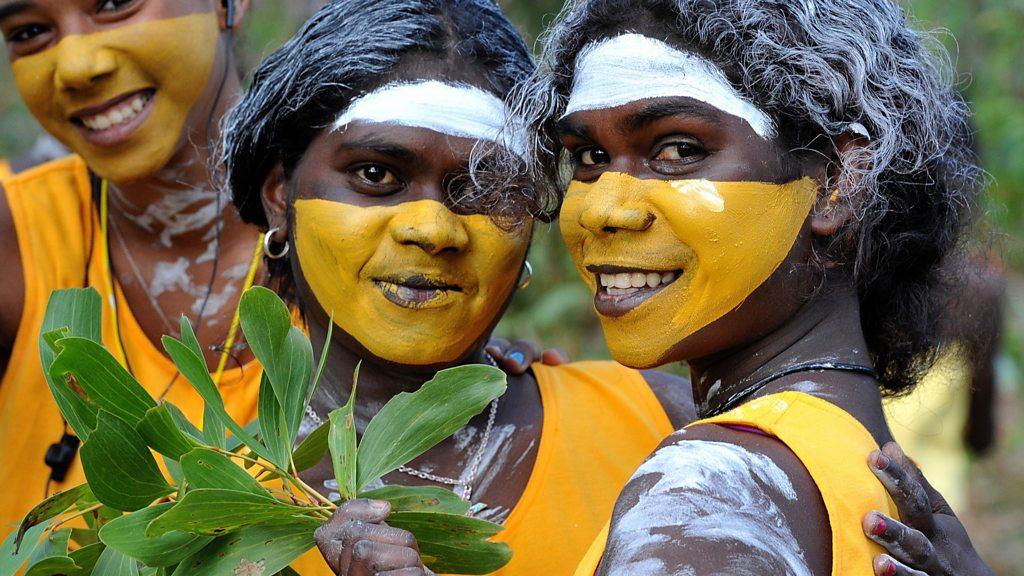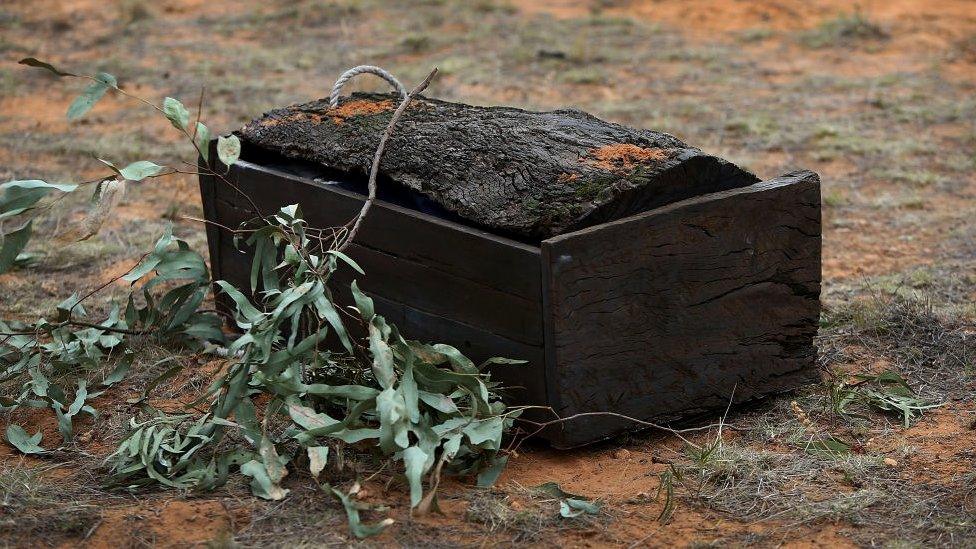Ancient South Australia cave art destroyed by vandals
- Published

Elders and cave experts say they raised concerns about security at the site months ago
Vandals have destroyed sacred artwork in South Australia thought to be about 30,000 years old.
The Nullarbor Plain art, which are designs carved into the chalk limestone walls of the Koonalda Cave, has special significance for the region's Aboriginal Mirning people.
The vandals are thought to have dug under a steel gate before scrawling "don't look now, but this is a death cave" on the walls.
The authorities are investigating.
"This is quite frankly shocking," South Australia Attorney-General and Aboriginal Affairs Minister, Kyam Maher, told ABC Radio. "These caves are some of the earliest evidence of Aboriginal occupation of that part of the country."
Senior Mirning elder, Uncle Bunna Lawrie, told the BBC he first heard about the "devastating" vandalism from the media and said it was another example of "the constant disrespect" his people had experienced.
"It's abuse to our country and it's abuse to our history," he said. "What's gone is gone and we're never going to get it back."
The Koonalda Cave has been listed as a National Heritage site since 2014.
Mr Maher said that those found responsible for the vandalism could face prosecution, something Mr Lawrie says he would welcome.
But Mr Maher and the federal government have been criticised both by elders and cave experts who say they raised the issue of poor security around the site months ago.
Individuals found to have damaged an Aboriginal site or item currently face a fine of A$10,000 ($6,700; £5,500) or up to six months in prison under South Australia's Aboriginal heritage laws.
However, the authorities have vowed to strengthen these laws following an inquiry into the destruction of the 46,000-year-old Juukan Gorge rock shelters.
Mining giant Rio Tinto was ordered to rebuild the Western Australian site after blowing the shelters up as part of an iron ore exploration project in 2020. Several senior figures from the company resigned over the incident.
Mr Lawrie said better laws to protect Aboriginal culture should have been put in place a long time ago.
- Published3 March 2021

- Published18 April 2022

- Published6 April 2022
